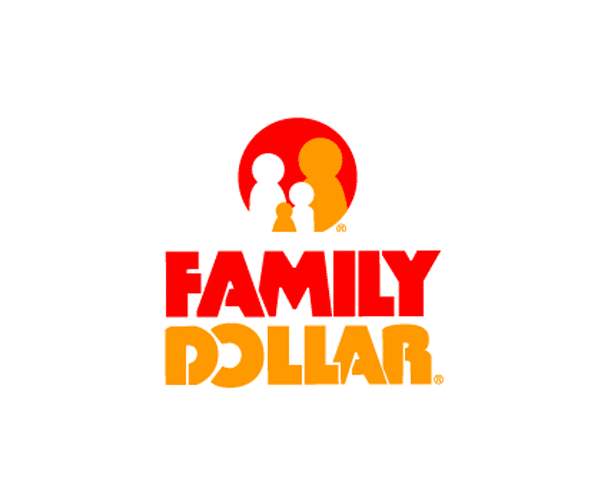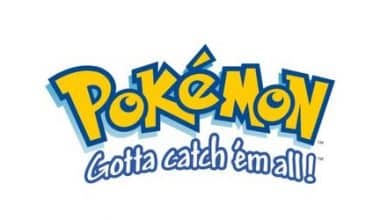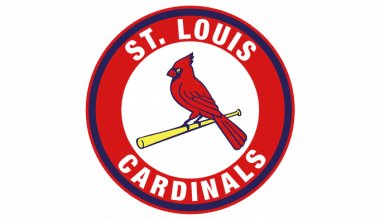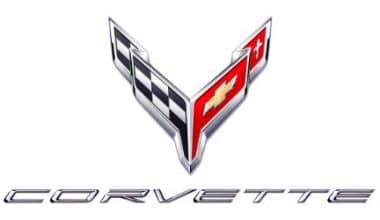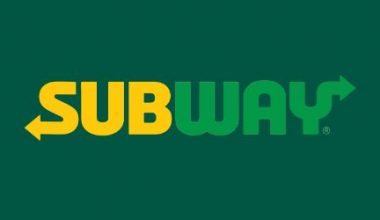The Family Dollar logo is one of the most recognizable logos in the discount retail industry. The logo has evolved over the years, but it has always maintained its core elements: a red circle with the words “Family Dollar” in white lettering.
The Family Dollar logo was first introduced in 1959. The original logo was a simple wordmark with the words “Family Dollar” in black lettering. The logo was updated in 1974 to include a red circle and white lettering. The current logo was introduced in 2005 and features a slightly different font and a red circle with an abstract family image inside.
The Family Dollar logo is more than just a symbol of the company. And let’s find out why.
This article will explore the history and the meaning of the Family Dollar logo. It will also why it has been so successful. and the different variations of the Family Dollar logo over the years.
What Exactly is Family Dollar?
Family Dollar is a retail chain that sells a wide variety of general merchandise at low prices. It has over 8000 locations (as of 2021) spread across most US states. Dollar Tree, Inc., the company’s main competitor, has owned the company since 2015.
The History of the Family Dollar Logo
The new owner decided to rebrand some Family Dollar locations as Dollar Tree. The integration needed to be completed because the remaining locations still used the old name and logo, which had stayed the same since 2008.
The retail chain has kept its identity for regular customers to recognize it. The company’s graphic sign has remained consistent throughout its history because it always included an inscription in bold capital letters without serifs. However, there were visible changes: after each redesign, the style became more understandable and closer to the original business concept.
1959 – 1960
She had to attract customers’ attention through advertising when the Family Dollar network was less prevalent than it is now. As a result, the brand logo has evolved into a marketing tool. It included the phrase “FAMILY DOLLAR STORES” as well as the phrase “SALE PRICES ARE EVERYDAY PRICES,” which reflected the pricing concept.
The title comprised the entire top line and was written in a jagged font with overlapping glyphs. It appeared to be a stylization of old cartoon credits. The company motto was written in bold sans-serif letters at the bottom. Both inscriptions were white and were contained within a black rectangle. The designers adjusted the glyph size and letter spacing to justify their width.
1960 – 1966
Leon Levine, a young entrepreneur, opened his first self-service store, Family Dollar, in 1959. By 1965, the number of outlets had grown to three. The company used a white-printed “FAMILY DOLLAR STORES” logo before becoming a retailing behemoth. It was designed primarily for signage, with the first two words at the top and the third centred at the bottom. Both parts were separated by black rectangles with a white outline. The designers used a simple geometric sans-serif typeface for the text.
1966 – 1976
In the mid-1960s, all logo elements were combined into a single large black rectangle. Furthermore, the brand name was framed in an uncommonly bold grotesque. The jagged, overlapping letters made the font appear cartoonish, reminiscent of the captions in the credits of Walt Disney Studios’ first Mickey Mouse cartoons.
At the same time, the word “STORES” shrunk: the developers increased the letter spacing to make it take up more space. The phrase “NOTHING OVER $3 IN OUR STORES” was at the very bottom because the price limit was raised to $3 in the 1960s. The cost of the goods was placed in a white circle and recoloured in black as a result. Because of the stores’ emphasis on family, the logo was stylized as the titles of old Walt Disney animated films.
1976 – 1983
Family Dollar decided to change its business model in the mid-1970s. This is how the black logo with just the brand name appeared. The inscription was created in a unique font, with the main difference being the empty spaces where the horizontal bar “A” should have come into contact with the left diagonal. The following version uses a different colour scheme for the same emblem.
1982 – 1997
The chain celebrated its 200th anniversary and opened a new distribution centre in 1974. At the same time, her sales started to fall, so she hired a marketing team that had to change the strategy. The “three dollars” inscription was removed from the logo after experts suggested raising the maximum price threshold. Its redesign has been incorporated into global changes.
The creators of the wordmark kept only the company name. The phrase “FAMILY DOLLAR” remained white, serving as the only link between the new and previous designs. The font was no longer cartoony but still appeared out of place. The designers used a grotesque font with disproportionate glyphs. Inside the letters “A,” “D,” and “R” were slits that ran parallel to the main stroke. As before, almost all the letters crawled on each other. A dark crimson outline replaced the black background. The inscription appeared stable and monolithic because it appeared to be a solid horizontal line at the bottom.
1997 – 2008
The original font was kept, as was the dark crimson colour that has come to dominate this emblem version. The letters “L” and “Y” were joined at the top, despite most of the letters having empty separating spaces between them, preventing them from merging. A unique pattern of four stylized “Fs” stacked in a propeller shape around a black square dot could be found on the left. The ornament appeared to be a flower or embroidery element.
2008 – Today
Howard R. Levine took over the company in 2003. Under his leadership, the logo was changed a few years later. The designers divided the brand name into two parts, separating them with a red circle and four white and orange men figurines. The word “FAMILY” turned red, and the word “DOLLAR” turned orange. The inscription “my family, my family dollar” appeared on the right side, with a dot at the end. Everything following the comma is in bold. The slogan has been condensed to the point where it fits perfectly under the word “DOLLAR” – from “D” to “R” inclusive. The background is white in general, with no contours around the letters.
Simultaneously, an alternate logo was used several times on the TV show Save to Win. It has a red rectangle as its base. The same red word “FAMILY” with a white outline appears inside, and below it is an orange “DOLLAR” with a dot in the centre of the “O.”
Colours and Font
The designers used a modified Tabasco Bold font from SoftMaker for the brand name, judging by the unusual shape of the letters. This is a retro sans serif inspired by the same-named typeface by John Schaedler. It is distinguished by a lack of proportionality and a noticeable asymmetry of some letters. The slogan is written in a standard sans-serif font, with one-half regular and the other half bold.
To draw attention to the brand name, its designers used two vibrant colours: red (#ef4136) and orange (#f89d33). They are visually balanced because they are balanced by white, which is used for both the background and the icon.
Family Dollar’s History
Family Dollar is a discount variety store chain in the United States with over 8,000 locations in almost every state except Hawaii, Alaska, Washington, and Oregon. It was the second-largest variety store chain in the United States until it was purchased by Dollar Tree in 2015. The new owners relocated the company’s headquarters from Charlotte, North Carolina, to Norfolk, Virginia.
Carl Icahn, the company’s majority and activist shareholder, demanded that Family Dollar be sold immediately in mid-2014. A month later, Dollar Tree announced an agreement to buy Family Dollar for approximately $8.5 billion.
Carl Icahn, Family Dollar’s majority shareholder, received a windfall due to the sale just a month after revealing his 9.4% stake in the company. Family Dollar shareholders approved Dollar Tree’s acquisition bid in January 2015.
The Origin of the Family Dollar
Leon Levine was a 21-year-old merchandising entrepreneur in 1958. He became intrigued by the idea of running a low-cost self-service retail store. Levine believed his customers could obtain various high-quality, valuable items for less than $2. Because his family had previously run a successful retail store, he understood the value of quality and making customers happy.
In November 1959, Levine opened his first Family Dollar retail store in Charlotte, launching his career as a retailing titan. Right from the start, he had a clear vision of what he wanted Family Dollar to be and how it should be run—a vision his company has never wavered from. The philosophy is straightforward: “Customers call the shots, and you must keep them happy.”
Levine created a consistent floor plan in all his Family Dollar locations so customers could easily shop for their favourite items. Store managers were able to focus on providing excellent customer service because the stores were designed and stocked uniformly.
The concept of a cash-and-carry, self-service neighbourhood budget store in low and middle-income neighbourhoods was so successful that Family Dollar now has over 8,000 stores across America, from California to Maine.
Family Dollar’s Difficulties in the 1970s
Family Dollar expanded rapidly in the 1960s. It took a decade to open 100 Family Dollar stores in the Southeast, according to Ourstate.com.
Family Dollar entered the 1970s with another landmark: the variety store chain went public, offering common shares at $14.50 per share. And even though the young variety store chain had opened its 100th location by 1971, its first distribution location in Charlotte in 1974, and then its 200th location, the 1970s proved to be a difficult period for the company.
However, by the mid-1970s, significant changes in the United States textile industry significantly impacted Family Dollar’s customers in the Southeast. As workers in the textile, tobacco, and furniture industries were laid off, the discount store’s sales fell, dropping by up to 50% between 1974 and 1975.
Regardless, the discount store chain decided to keep going. It formed a new marketing team, slowed down on its plan to sell goods for less than $3 (at the time), and installed an electronic data processor. Things quickly returned to normal.
Family Dollar eventually weathered the storm and emerged stronger. By 1977, annual sales had surpassed $100 million, and the aforementioned common shares began trading on the NYSE to round out the 1970s.
The Family Dollar in the 1980s, 1990s, and After
Family Dollar opened its 400th store in 1981, followed by its 500th and 700th stores in 1982 and 1983, respectively. Family Dollar experienced rapid growth in the 1980s, with 1,500 stores open by 1989.
However, as Family Dollar expanded its national presence in the 1980s, it failed to anticipate increasing competition from rival Wal-Mart stores. Total sales growth in newly opened stores dropped from 9% in 1984 to 2% in 1985. Total sales remained flat in 1986 before falling 10% in 1987.
As a result, the company implemented a new pricing strategy in 1987: they would be well-spent. Sales increased by 10% in two months. Lower prices hurt margins, but the company compensated by slowing its expansion.
Family Dollar had 1,107 stores in 23 states by 1986. Simultaneously, Wal-Mart stores were making inroads into the rural Southeast, a stronghold for Family Dollar. While Family Dollar used its profits to open more stores, Wal-Mart used its purchasing power to lower prices.
Family Dollar’s expansion slowed in the 1990s compared to the previous decade, with only 1,000 new stores opening. The company established distribution facilities in Duncan, Oklahoma; West Memphis, Arkansas; and Front Royal, Virginia.
Read Also: Orleans Saints Logo: What Does it Stand For?
Since 2000, Family Dollar has grown significantly, with approximately 3,500 new stores and distribution centres opening in Rome, New York; Marianna, Florida; Morehead, Kentucky; Odessa, Texas; and Maquoketa, Iowa.
Family Dollar was added to the Fortune 500 list of the largest publicly traded companies in 2002. Leon Levine retired in 2003, and his son, Howard Levine, became CEO and Chairman. This ensured that the family retained control of the multibillion-dollar corporation.
By August 2011, Family Dollar had 7,000 retail locations in 44 states across the United States. According to the company’s website, the company opened 500 new stores in 2005, 350 more in 2006, and 300 more in 2007.
According to Family Dollar’s 2013 Corporate Profile, the company opened 200 new stores in 2010, another 300 in 2011, 475 in 2012, and 500 more in 2013. Family Dollar announced on October 3, 2012, that it would open 500 stores the following year. A day later, the company announced a collaboration with Healthways.
The company operates 11 distribution centres, the most recently opened on October 16, 2013, in St. George, Utah.
Dollar Tree Buyout
Dollar Tree announced in July 2014 that it would purchase Family Dollar for approximately $8.5 billion and assume $1 billion in debt, bringing the total acquisition price to $9.5 billion. After the merger, Dollar Tree retained Family Dollar CEO Howard Levine and appointed him to the company’s board of directors.
Family Dollar shareholders approved Dollar Tree’s bid to acquire Family Dollar in January 2015.
One condition of the takeover was the sale of several Family Dollar stores. Sycamore Partners purchased the Dollar Express discount stores in 2014, but they continued to operate under the name Family Dollar. Dollar Express was purchased by Dollar General in 2017, and its stores were converted.
As a result of Dollar Tree’s acquisition of Family Dollar, some Family Dollar discount stores have opened in the same building or even next to Dollar Tree stores. Due to intense pressure from one of its activist shareholders, Family Dollar announced in March 2019 that it would close up to 400 stores nationwide. Most stores were either replaced by Dollar Tree locations or closed entirely.
Family Dollar has implemented a newer store layout called “H2” in renovated and recently opened locations, emphasizing grocery items and Dollar Tree products. Furthermore, the company has opened co-branded Dollar Tree/Family Dollar store locations in smaller markets.
Family Dollar employees must wear a red polo t-shirt to work. Those who wear jackets while working may do so in any colour. Many employees prefer to work in light pink jackets.
Related Articles
- HOW TO MAKE A DECISION: Effective Guidance to Avoid Mistakes & Disappointment
- FAMILY BUDGET: How To Make One
- What is the AVERAGE COST FOR BUSINESS INSURANCE? (Detailed Guide)
- DOLLAR TREE LOGO: The Inspiring Story Behind the Brand
